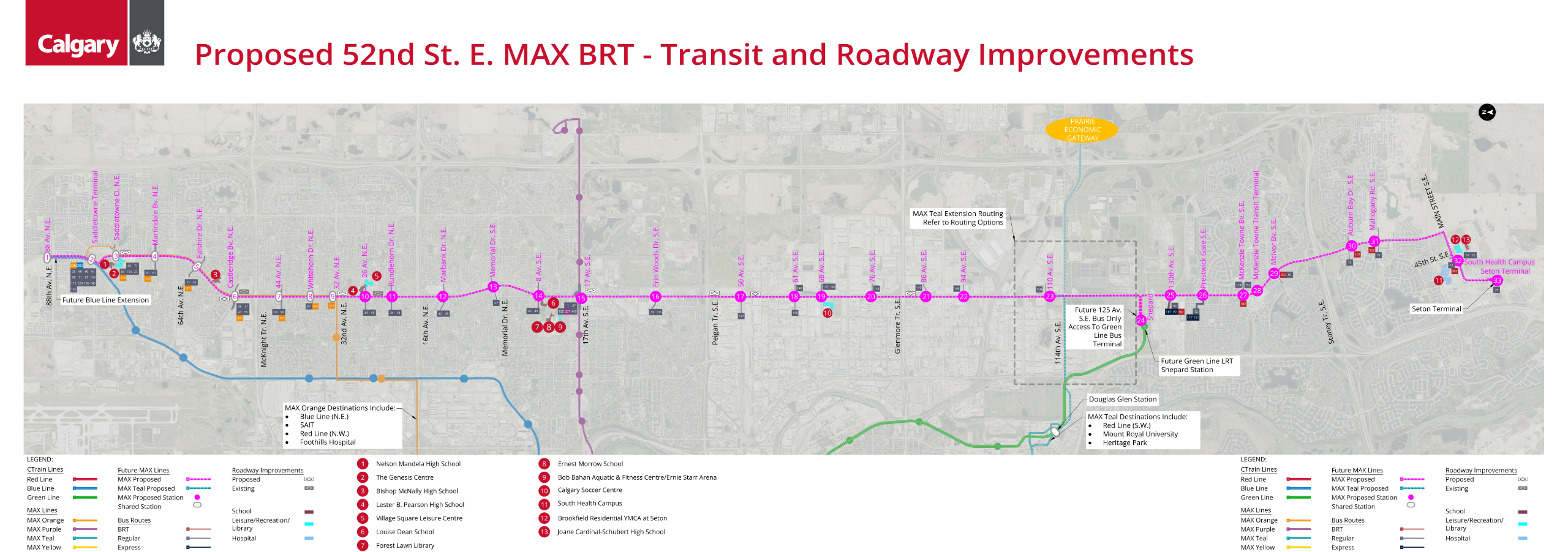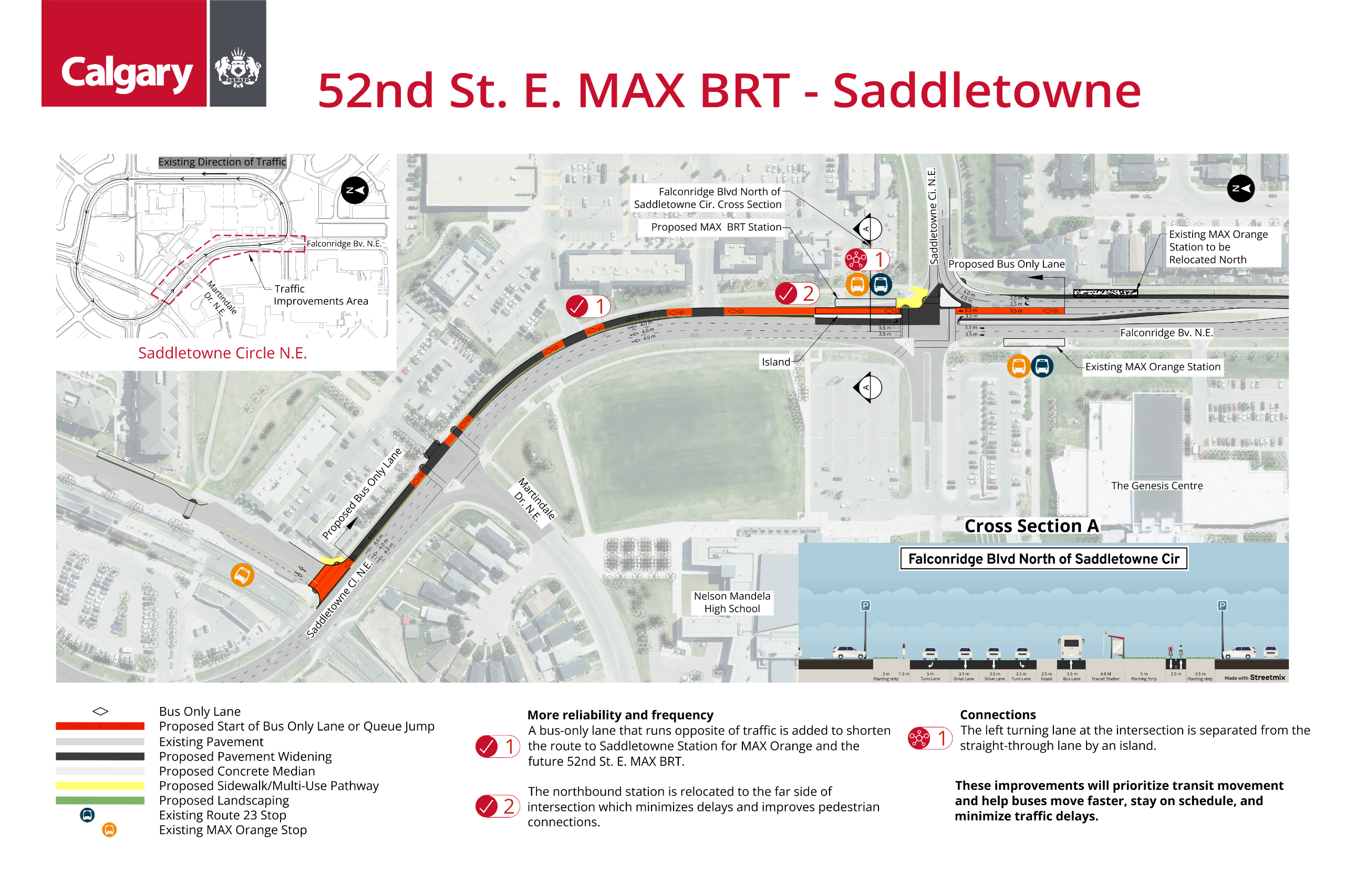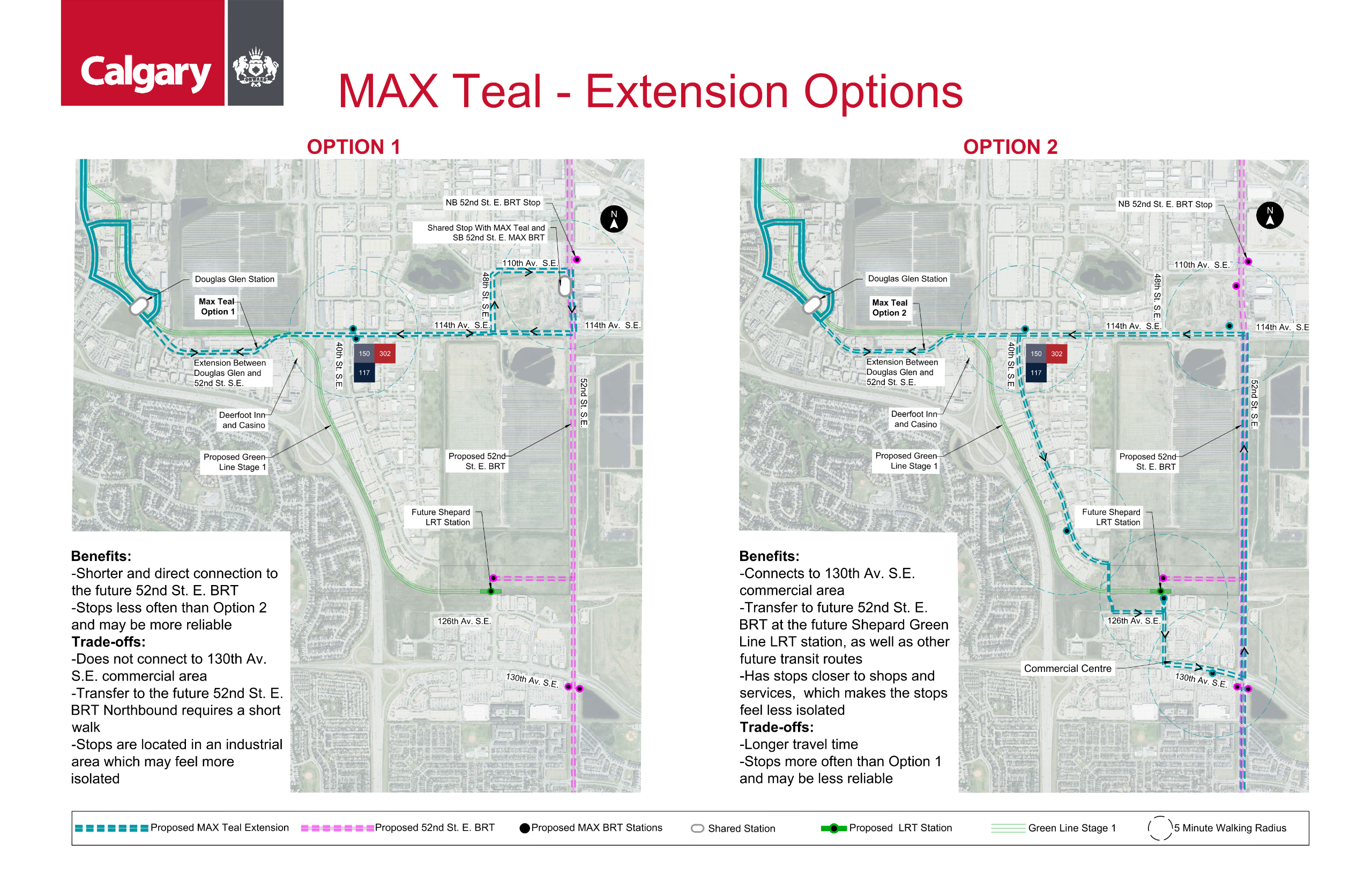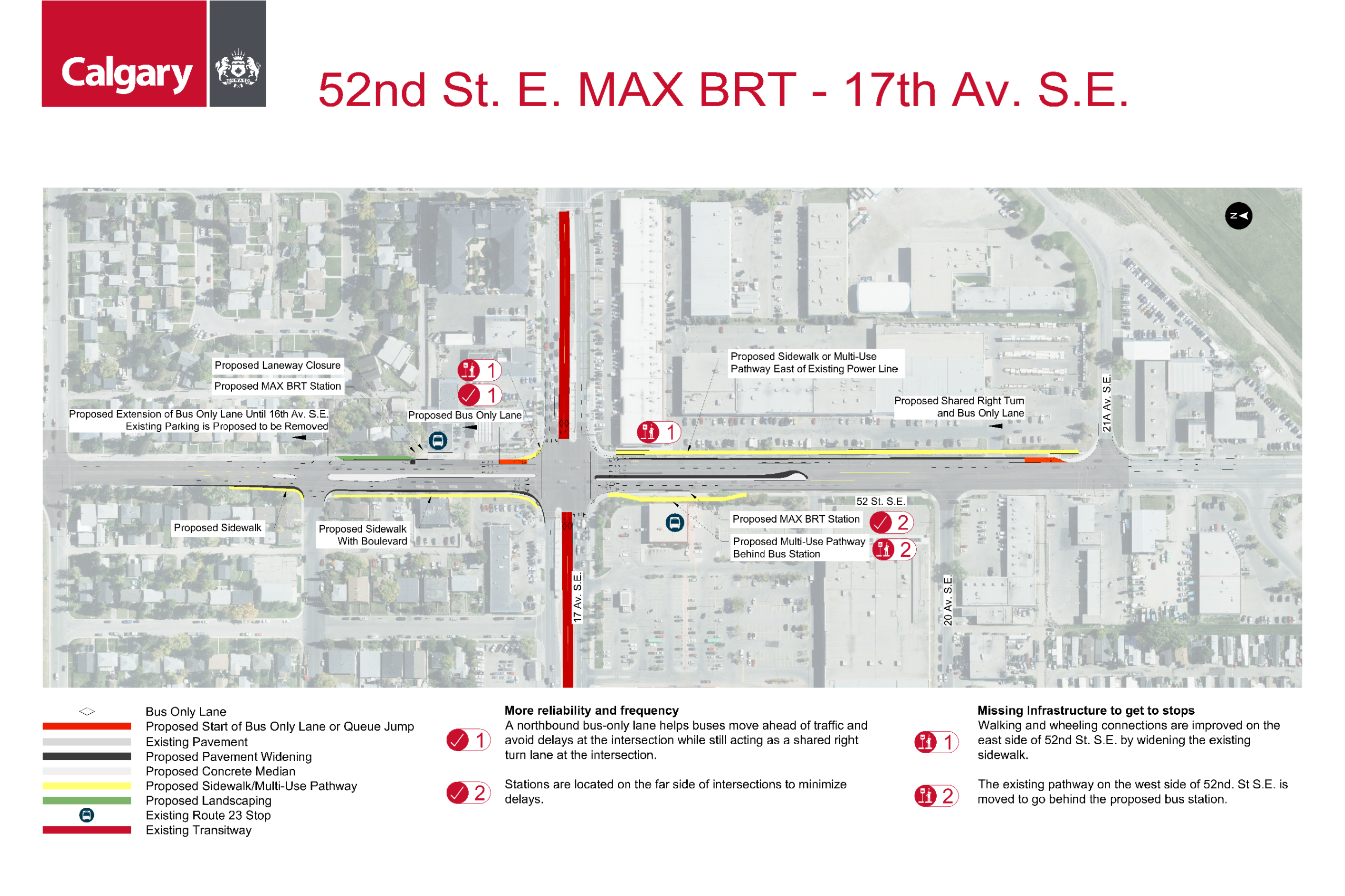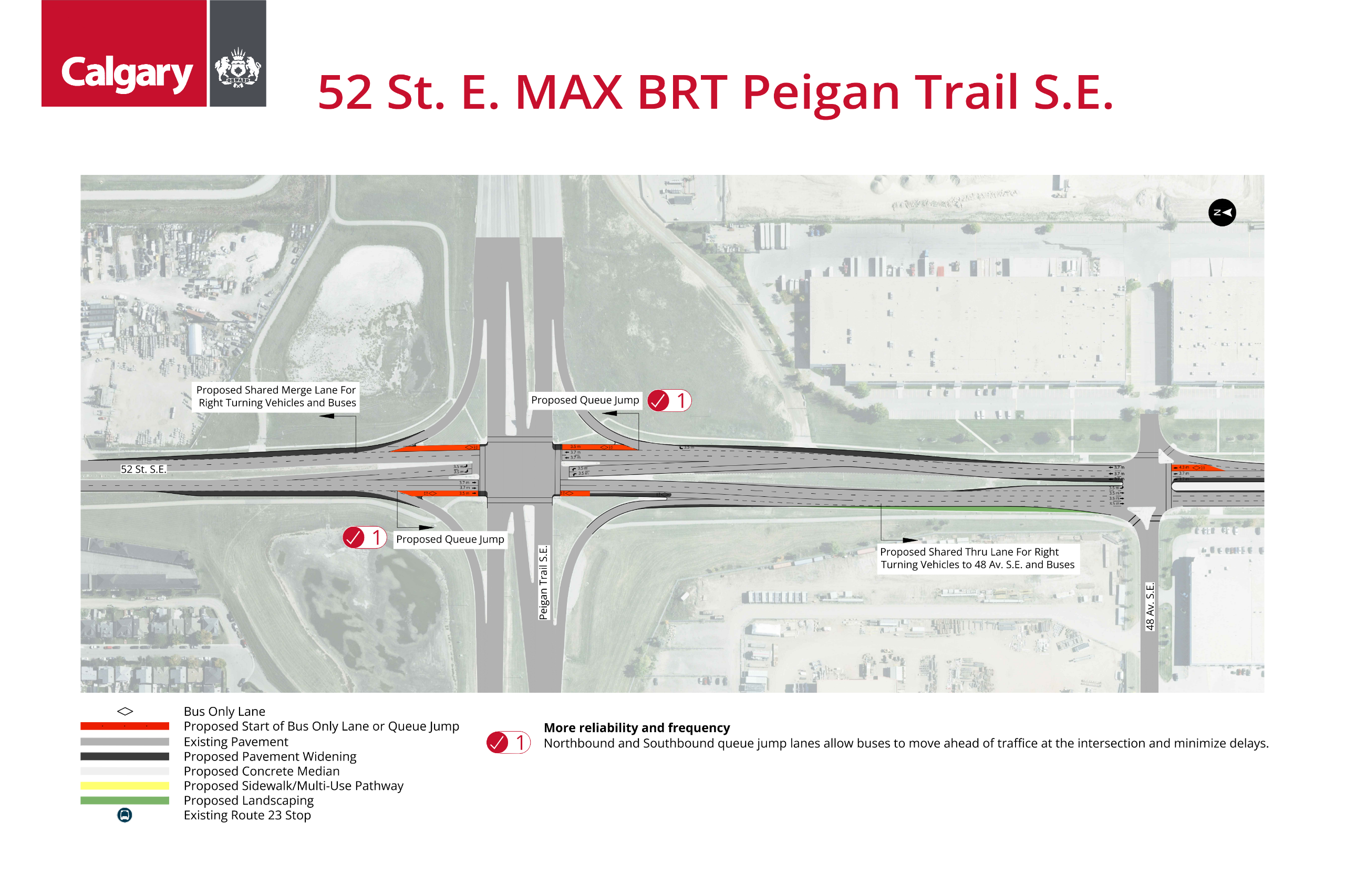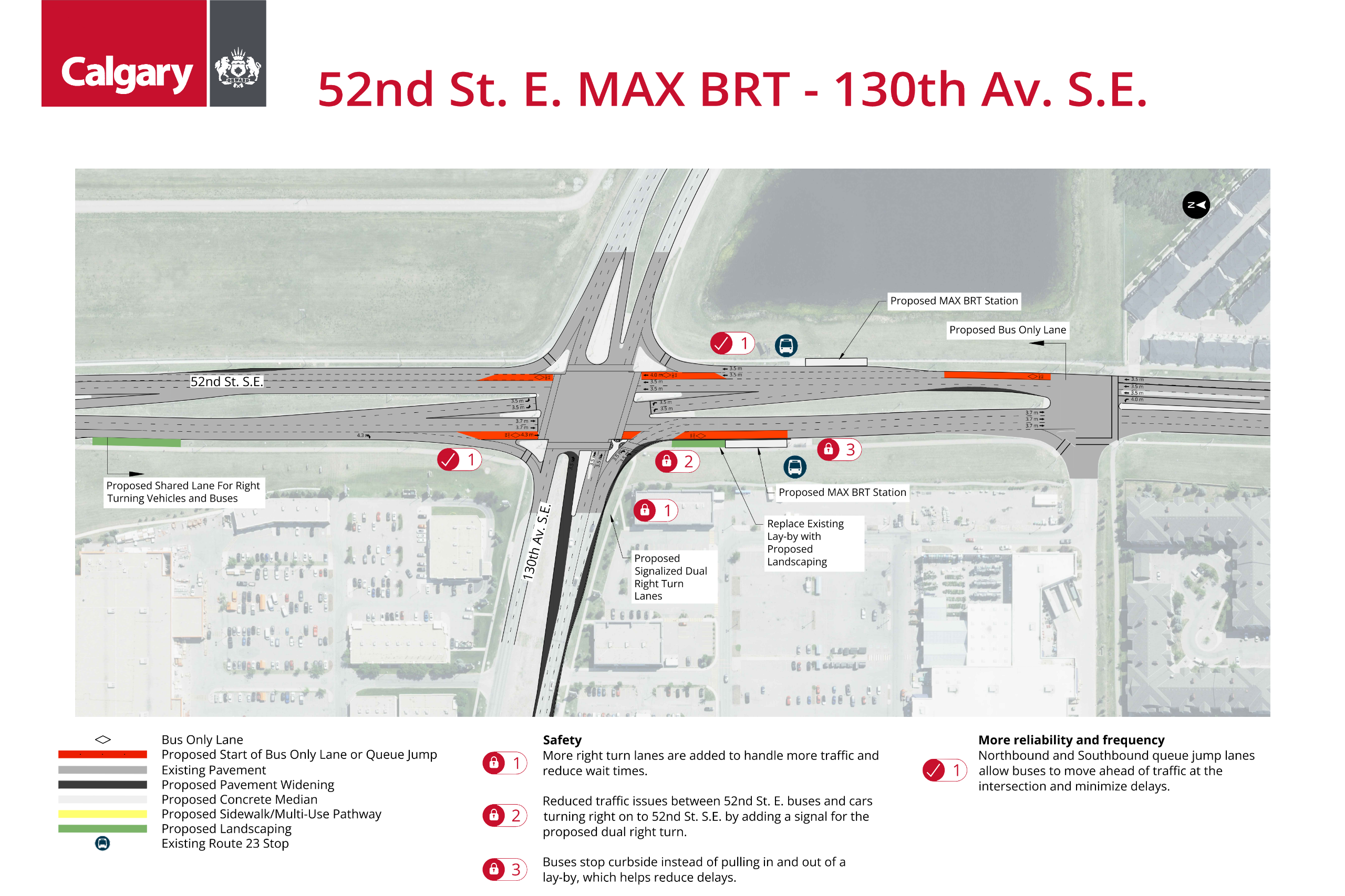Overview
Phase 2: Explore now completed
The Study
The 52 Street East BRT project will bring faster, more reliable bus service along the second busiest transit corridor in the city, connecting key destinations and improving rider experience. It also includes plans to extend MAX Teal to the future 52 St. E BRT, for better transfers and overall transit access.
Complete the Phase 2 surveys below to tell us what you think of our proposed station locations, roadway improvements and pathway and bikeway connections.
Study area

Phase 2: Explore
Learn about the proposed improvements and share your thoughts!
We’ve developed proposed improvements based on:
- City policy including RouteAhead
- Technical data and analysis
- Feedback from Phase 1 (See below for Phase 1 feedback top themes we heard)
We want your input on:
- Proposed station locations
- Roadway improvements
- Sidewalk and pathway connections
Your feedback will help:
- Refine the proposed plan
Take the surveys!
We're planning the future 52 Street E BRT and want your feedback. We’d like to know what you think about the station locations, how people can walk or bike to them, possible road upgrades, and ideas for extending the MAX Teal line.
- The proposed station spots were chosen based on current bus use and transit connections, nearby places like Village Square Leisure Centre, and future developments like the Forest Lawn Civic Centre.
- We also looked at sidewalks and pathways within 800 metres of each station to find missing links.
- The proposed roadway improvements will help buses travel faster along the corridor.
These changes aim to make buses more reliable and help people travel faster along 52 Street, including on the new BRT route.
Click the tabs below to complete the 3 surveys to tell us what you think.
52 St BRT survey
Question 1: Proposed stations
Saddletowne Circle roadway improvement survey
To ZOOM IN further, you can open the PDF here: Proposed 52nd St. E. MAX BRT - Transit and Roadway Improvements
Question 1: Roadway improvement
MAX Teal extension survey
The Study is considering a proposed extension of MAX Teal route from Douglas Glen to the future 52 St E BRT to improve connectivity between major transit routes.
Question 1: Preferred route
Additional proposed roadway improvements
Click the tabs below to learn about the proposed improvements for each location.
17 Ave S.E.
Peigan Trail S.E.
130 Ave S.E.
Phase 1: Discover summary
In Phase 1, February 2025, we received feedback that identified the key concerns and opportunities for The Study.
Here are the top five themes and what we did in response:
What we heard, what we did
What we heard:
What we did:
As a local route, Route 23 has a lot of stops, which adds to bus travel time and can lead to challenges with buses being reliable and on time. The 52 St E BRT Study proposes consolidated stops at key locations and changes to the road to make transit more efficient and reliable for riders. The BRT is also on the Primary Transit Network, which means once implemented, it will have buses running at least every 10 minutes, 15 hours of the day, every day of the week.
What we did:
The feedback indicated that a high number of participants transfer to and from buses on 52 St E. The team reviewed the locations along 52 St E that had transfer routes and prioritized those to be potential BRT stations.
What we did:
People in the northeast and southeast parts of the city said they use transit to get to destinations across Calgary, but it can be difficult and time consuming without more direct connections. Once BRT Route 302 is implemented, it’ll reduce travel time to key transfer locations as well as to other Primary Transit Network routes including MAX Purple, MAX Orange, 302, and Saddletowne Station future Green Line LRT and future MAX Teal extension.
What we did:
We heard it’s hard to walk or wheel to some bus stops because of gaps in walking and wheeling paths. We have reviewed the sidewalk/ pathways that connect to the BRT stations we are proposing.
What we did:
The feedback indicated several safety concerns. The proposed BRT stations will have features that prioritize safety. More details of the station amenities (i.e.. Lighting and CCTV, live travel information updates, etc.) will be developed i n future phases of the project.
For a detailed summary of feedback received, you can review the Phase 1 What We Heard Report.
Participation
Next steps
We will use feedback from Phase 2, along with any necessary technical updates, to develop the recommended plan, which will be shared in fall 2025.
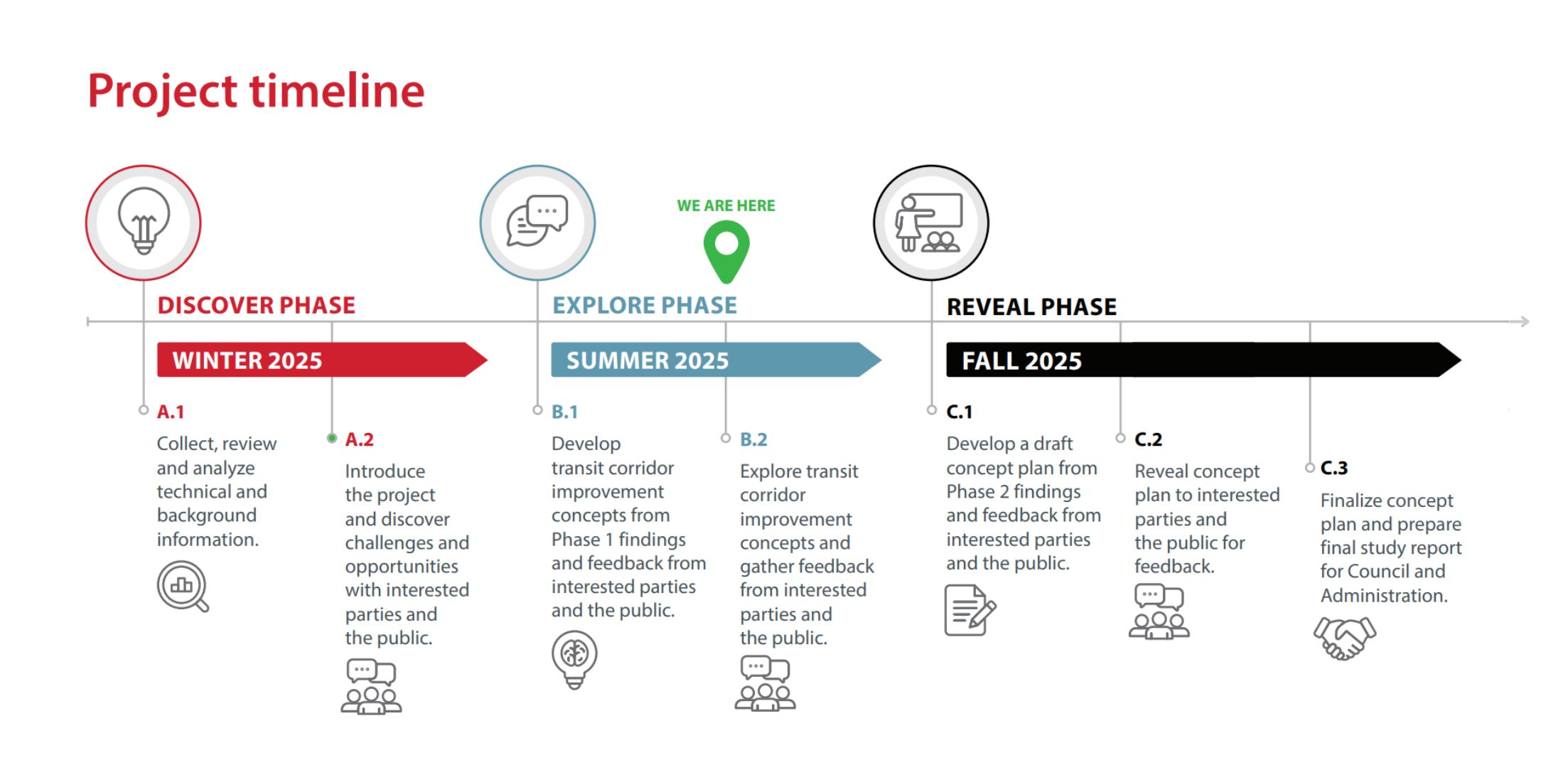
Project Overview
Through this Functional Planning Study, we will:
- Work with the public and key audience to understand the opportunities and/or constraints, as well as their needs, wants, concerns, and ideas;
- Develop a functional plan for the 52 St E BRT corridor including BRT stations, access to transit service, transit priority measures, roads, and intersections;
- Recommend MAX Teal extension functional plan;
- Determine the phasing and cost of the project;
- Identify the necessary right-of-way and develop a business case to acquire funding for future project phases (ie. design and construction).
The 52 Street East Bus Rapid Transit (BRT) project is a Functional Planning Study. It was identified as a priority project in Calgary Transit’s 30-year strategic plan, Route Ahead, which was council-approved on July 4, 2023. As per the plan, the Route 23 local transit service will be upgraded to BRT service as part of the Primary Transit Network. Route 23 which runs on 52 St E is currently the third busiest local route in the City of Calgary and has seen growing ridership.
The 52 Street E BRT will be a 30 km north-south crosstown route on Calgary’s Primary Transit Network (PTN) between Saddle Ridge at Saddletowne Circle and Seton. The BRT route will intersect several PTN routes for more direct connections (ie. Blue Line LRT, MAX Orange, MAX Purple, BRT route 302, future MAX Teal, and future Green Line LRT).
The transit service and experience will be comparable to existing MAX routes in the City with reliable and faster service to live, play and work destinations and transit transfer locations along 52 St E. Customer experience will be improved with amenities such as well-lit heated shelters, real time displays and convenient transfers to other PTN routes to improve the overall transit journey.
As part of the Study, we are also reviewing the MAX Teal extension from its last east end station at Douglas Glen. The RouteAhead identifies MAX Teal connecting further east to 52 Street E to connect the MAX Teal and 52 St E BRT PTN routes for convenient transfers that improve the overall transit journey.

Public engagement process
Public engagement process
We want to hear from you! Public input is a valuable part of developing the plan. Your feedback will play a key role in guiding the next phases of the study.
How your feedback will be used
We will collect input from the public, along with technical data, City policies, budgets and best practices to inform the plan. The studies findings will show how transit connects with other transportation modes along the corridor and help guide future transit development.

The engagement process for the 52 St E BRT study will be conducted in three phases:
- Phase 1: Discover - Gather initial feedback to inform the design concept options.
- Phase 2: Explore - Share design concept options for public feedback.
- Phase 3: Refine - Present the preferred options and gather feedback to refine and prepare the preferred plan.

